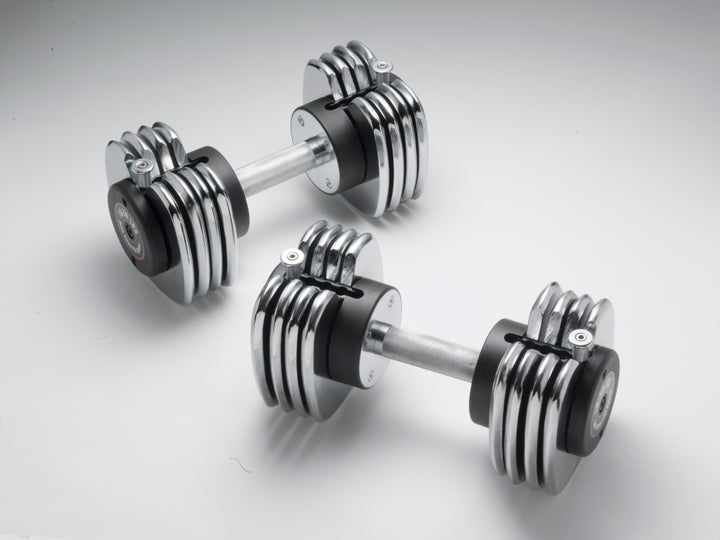For SELF, by Amy Rushlow.
Stay motivated with this essential info.

So you’re ready and raring to get back into a fitness routine? Good for you! A few simple workout tips will help you keep up your excitement.
If the last time you exercised consistently was when Jon Stewart still hosted The Daily Show, congrats on renewing your commitment. A fresh start can feel great — but beware of pushing too hard too soon. When you’re coming back from a break from regular workouts, it’s common to start strong but burn out before you start seeing the benefits. Follow these workout tips to stay motivated, prevent injury, see results, and most importantly — enjoy yourself!
1. Throttle your intensity.
The number-one mistake people make when starting a new exercise plan is going too hard too soon, says women’s strength training expert Holly Perkins, CSCS. “The fallout is strong carbohydrate cravings, lackluster results (if any results at all), quick burnout, and a drastically increased risk for injury,” she tells SELF.
Instead, keep your effort level at “challenging, but not grueling” for the first month, Perkins says — about a six or seven on a scale from one to 10. “You’ll actually see bigger, better, faster results if you start more conservatively.”
2. Work out every other day.
It can be tempting to want to exercise every day to try to form a habit, but an every-other-day routine will actually boost your results. After a workout, your body needs time to repair your muscles and re-up the stored energy (known as glycogen) in your cells.
Exercise no more than three or four times a week for the first two weeks, Perkins recommends. If you’re feeling good — that is, your energy levels are high and your muscles aren’t sore after workouts — it’s OK to add another day. But even once you’re in a regular workout schedule, it’s a good idea to alternate hard days and easy days to ensure proper recovery.
3. Warm up the right way.
A good warmup is essential to preventing injury during a workout, Molly Galbraith, CSCS, cofounder of Girls Gone Strong, tells SELF. “However, a five-minute walk on the treadmill isn’t going to cut it,” she cautions. Light cardio does have some benefits, like increasing blood flow to your muscles, but it falls short of preparing your body for a workout.
To prime your body for exercise, a warmup should include big movements like Downward Dogs, body-weight squats, and glute bridges, Galbraith says. These exercises activate large muscle groups like your core and glutes (butt muscles), increase your core temperature, and take your joints through a full range of motion.
This type of exercise prep, known as a dynamic warmup, is widely accepted as the gold standard for athletes and casual fitness enthusiasts alike. Learn how to do Galbraith’s go-to dynamic warmup routine here.
4. Gear up without going broke.
Running shoes wear out within three to six months, so you’re probably due for a pair of new kicks to ward off foot, ankle, and knee pain. The best way to find the right shoes for you is to go to a local running store and have a free professional fitting.
But here’s a secret the pros won’t tell you: Once you’ve established a go-to shoe, you can often find huge deals on last season’s model on Amazon.com or other online outlet stores. In other words, by the time you need to replace your shoes, you can find the exact same pair you’ve been wearing for $20 to $30 off. (It’s still a good idea to get a professional fitting periodically.)
A new piece of apparel can also give you a boost of motivation. “Even an inexpensive piece of athletic apparel or footwear does wonders,” Perkins says. “It’s such a silly thing, but a new tank top really can boost your confidence and excitement.”
5. Be an underachiever for once.
Goals are great and all, but you know who doesn’t give a crap about your lofty goals? Life. “The most important thing to consider when starting a new fitness regimen is that nothing rarely ever goes as planned,” fitness and mind-set coach Neghar Fonooni tells SELF. “I see a lot of people go all in and set super high expectations for themselves, only to fall short and drop off because hey, that’s life!”
So as you think about your goals for the next week, month, and beyond, set the bar low. We’re talking knee-high.
“Embark on a fitness plan only as much commitment as you know you’ll be able to adhere to,” Fonooni recommends. “When we can’t keep up with our routine, we often quit altogether,” she adds. Achievable goals will help you feel successful and encourage you to stay consistent.
Once you have a goal in mind, do a reality check: Have you been able to stick with this type of plan in the past? Is there any part of your plan that will be particularly difficult (say, getting up at 6 A.M. when you’re not a morning person)? Adjust your expectations accordingly.
More From SELF:
